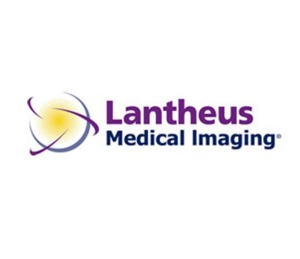by
Brendon Nafziger, DOTmed News Associate Editor | June 09, 2010

Good safety data on
PET drug for heart tests
An imaging agent that lights up part of the nervous system to give doctors a new way to check if patients are ailing from heart failure appears to be safe.
At SNM's annual meeting in Salt Lake City Tuesday, phase I safety studies on the agent, dubbed LMI 1195, indicate it's OK, according to its developer Lantheus Medical Imaging Inc.
"We had no safety concerns and no serious adverse events," Dr. Veronica Lee, medical director of clinical research and development at Lantheus, told DOTmed news.



Ad Statistics
Times Displayed: 76903
Times Visited: 2661 Ampronix, a Top Master Distributor for Sony Medical, provides Sales, Service & Exchanges for Sony Surgical Displays, Printers, & More. Rely on Us for Expert Support Tailored to Your Needs. Email info@ampronix.com or Call 949-273-8000 for Premier Pricing.
In the study, the N. Billerica, Mass-based company tested the agent on 12 healthy volunteers.
"We're very pleased, and got very nice, clear images with good delineation between the heart and the liver," Lee said. Because the liver is so close to the heart and sucks up so much of most agents passing through the body, images in that area can often appear blurred in other modalities, she said.
The agent also yielded a radiation dose "comparable to that of other commonly used PET radiopharmaceuticals, and that good image quality is possible at the given dose," the company said in a statement.
The tracer works by illuminating the autonomic nervous system, which is affected in heart failure, Lee said.
"What we know through other studies, and in general, when there is systemic heart failure, the ANS is affected, and a lot of our therapies, such as beta blockers, part of their effects are improving the workings of the ANS," Lee said.
The radioactive tracer binds to norepinephrine transporters; norepinephrine is a neurotransmitter squirted into the synapse between neurons. When the heart fails, your body releases norepinephrine to encourage the heart to work harder. But norepinephrine transporter levels fall. In ailing hearts, transporter concentrations diminish, so a decreased signal could be a clue to heart failure.
Lee believes the modality could prove superior to current methods of diagnosing heart failure, such as relying on chest X-rays and measuring the ejection fraction, the amount of blood pumped out by your heart.
"I've had patients who've done splendidly well, and people who've done horribly with ejection fractions mildly decreased," she said. "Our agent is going to give us a closer look at what's going on, on a patho-physiologic basis, and really be able to see if the autonomic nervous system is functioning normally."
A related imaging agent, called MIBG, is used in SPECT oncologic imaging, but also has off-label uses with Parkinson's disease in Japan, Lee said.
Lantheus is working on setting up phase 2 trials soon, likely later this year, the company said.
Back to HCB News

